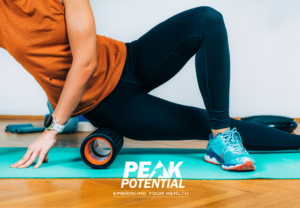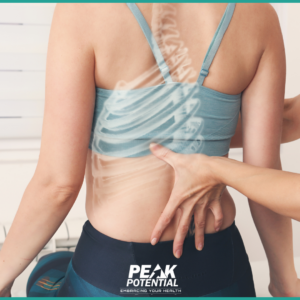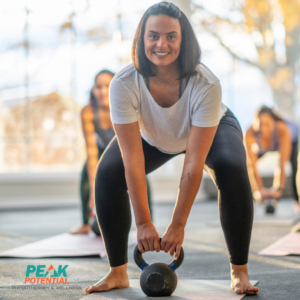If you have ever spent an hour packing the car with heavy suitcases and cumbersome coolers for a family trip to the beach (or lake or mountains, or grandmas house) then proceeded to sit in the car for several hours – it’s likely you’ve experienced back pain.
You know, the kind that makes it hard to stand back up straight once you arrive at your destination. In fact, around 30-60% of drivers report having back pain at some point in their life, and a lot of the people we see at Peak Potential after a summer road trip.
However, it doesn’t take a road trip to trigger this type of pain. A 30-minute commute to work or running kids to various summer activities can be enough to cause discomfort and lingering symptoms.
But why does something as simple as driving trigger back pain when it’s not exactly strenuous?
Well, driving exposes the body to many different forces such as acceleration, sudden stops, and most notable vibrations from the road – and it especially affects those of us who drive larger trucks, vans, or SUV type vehicles for hours at a time!
Driving also involves the use of your feet to control the car’s pedals which means they are not used to help stabilize and support your lower body as they normally would when you’re sitting.
So it’s no wonder why a combination of these factors as well as the inadequate design of some vehicle seats can cause back problems for many of us.
Because back pain can make driving unpleasant (and in some cases, unbearable!) I put together a list of tips to help make your next journey as pain-free as possible.
Here are 7 tips to help you:…
1. Get Comfortable Before You Set Off
A small irritation can quickly grow into an unbearable pain, and if you’ve got a long journey ahead, or even if you’re just in the car for 20 minutes, this can make your journey unpleasant and likely to affect the rest of your day.
So, before you set off take a few moments to settle into a comfortable position. Check your mirrors, adjust your seat – this is particularly important if you share your car with other drivers. You don’t want to strain your body or have to turn awkwardly placing a strain on your neck and upper back!
2. Adjust Your Mirrors
Making sure your mirrors are in the right position is especially important so you don’t have to move or twist to see out of them properly. As a general rule, you should only have to move your eyes to be able to see out of your mirrors.
Tip: If you adjust them while sitting up straight – if you begin to slouch you’ll lose vision in the mirrors, which will act as a reminder to sit up.
3. Use A Towel For Support
For additional support while driving – roll up a towel and place it behind your lower back. Car seats don’t often support the curve of your back. By using a towel you’ll help yourself out by maintaining good posture, making back pain a lot less likely to creep up.
4. Make Sure You’re Sitting Comfortably
Most people don’t realize it, but when they’re driving their seat is positioned completely wrong, which can cause back pain and problems with posture.
As you take a seat, make sure your seat is only slightly reclined so that it feels natural to sit comfortably – think 100-degree angle instead of 90, and you’ll be sitting in about the right position to drive pain free.
If you recline your seat too far, your head won’t be able to comfortably rest against the headrest which can cause tension in your neck and upper back.
5. Take Regular Breaks
I know you see signs for ‘taking a break’ along the side of the road all the time – but it’s for good reason.
Stopping regularly (around every hour) to move and stretch will help ease any tension and reduce any muscle stiffness.
When you take a break, do some gentle twists to loosen the body up. And if your neck and shoulders are feeling tense – try shrugging and rolling your shoulders back and forth, then rolling your neck from side to side.
6. Have Cruise Control? Use it!
If your car has cruise control, use this when you can – usually on long stretches of road when it’s quiet or the traffic is flowing nicely.
While using it, place your feet on the floor so your legs form a 90-degree angle and gently push them down into the floor. This will help naturally support your spine and put you in a neutral position without having to press down on the pedal constantly.
7. Exercise Regularly
Even just adding exercise into your routine 2-3 times a week will help strengthen your back muscles, release tension and help you maintain a healthy posture.
Cardio exercises like cycling, walking, and swimming are great for overall fitness, and resistance training is perfect for improving muscle strength.
And if your back pain is really bad, making you fearful of participating in exercise in case it makes your back worse, you can always give our clinic a call. Our specialists are happy to answer questions to help you live with less pain, even if you’re not a patient – just call 901-316-5456.
For more information and tips about natural ways to live with less back pain – Download our free report at the link below . . . 7 Solutions to End Low Back Pain
Learn different ways to ease back pain… even if you’ve suffered for months or years and your doctor told you nothing could be done to help!




